What is a Wonkee Donkee Trend router bit? |
||||
 |
||||
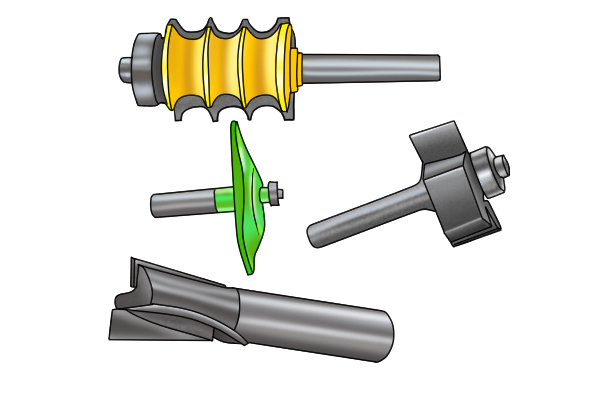 |
A router cutter (also often called a router bit) is an attachment that is inserted into a woodworking router’s collet in order to cut different shapes in materials like wood, plastic and non-ferrous metals. Trend are a UK company who have been leading the market in routing technology for many years. Wonkee Donkee Trend work exclusively with Trend because of our confidence with their products. |
|||
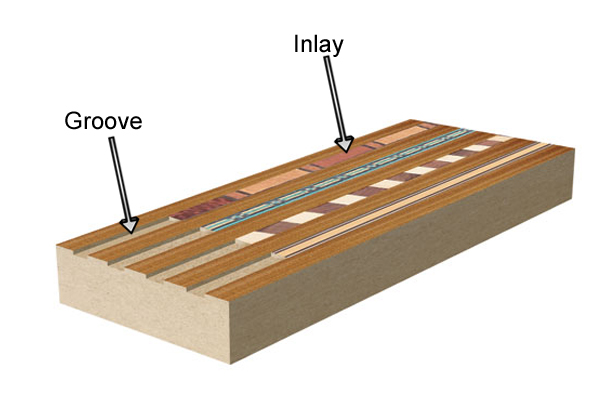 |
Router bits are available in many different flute forms, materials, and sizes, for a wide range of applications, including:
Opt for Weatherstrip router bits or inlay kits for these types of cut. |
|||
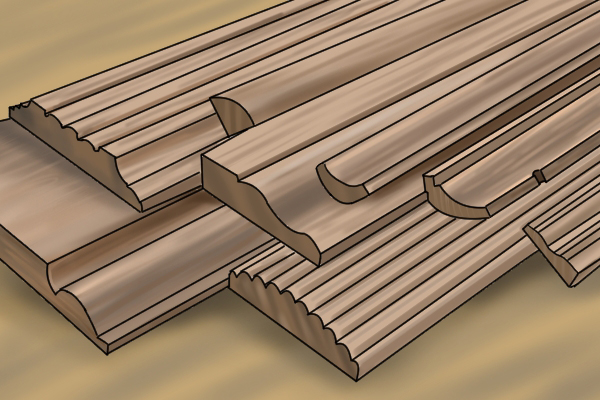 |
Choose from a selection of Edge Moulding cutters and Decorative Bead Mould cutters for profiling strips of timber. |
|||
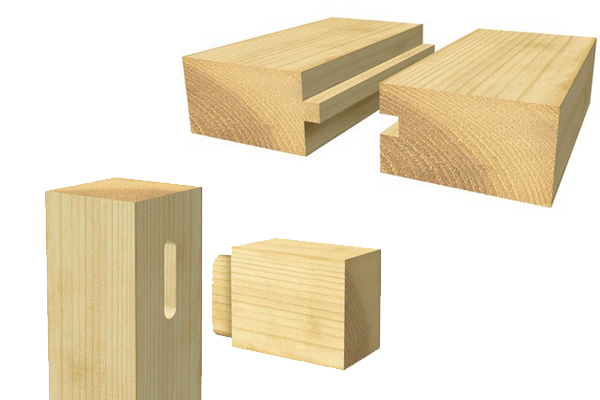 |
There is a selection of router bits and joint cutters available for these, including tongue and groove cutter, and biscuit joiners, and also jigs for different joint cuts, such as Mortise and Tenon Jigs or dovetail jigs, for dovetail and comb joints. |
|||
 |
|
|||
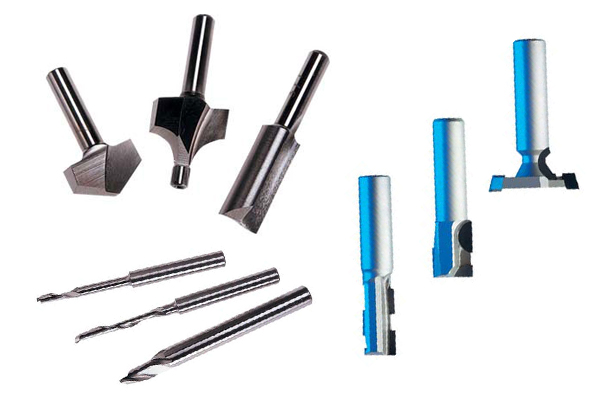 |
Whether choosing a router bit for production applications or for home use, correct selection to suit the specific application is vital in achieving the best possible efficiency and finish. That is why we supply such a large range of routers, router tables, router bits, router jigs, and other router accessories. |
|||
 |
||||
How does a router cutter cut? |
||||
Using a router hand-held |
||||
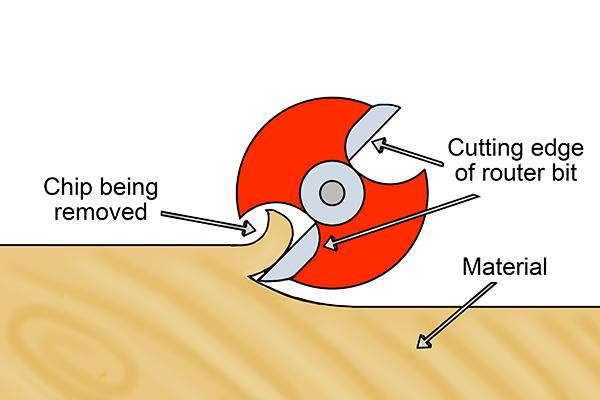 |
The handheld router spins the router bit, or cutter, very fast in a clockwise direction. The hand held router is then moved against the workpiece, so the cutting edges can contact the material. This is known as ‘feeding’. As the router bit spins, its cutting edges slice through the material, shaping it. The material that is removed gathers in the gullet and is expelled with each turn of the router bit or cutter. |
|||
Using a router in a router table |
||||
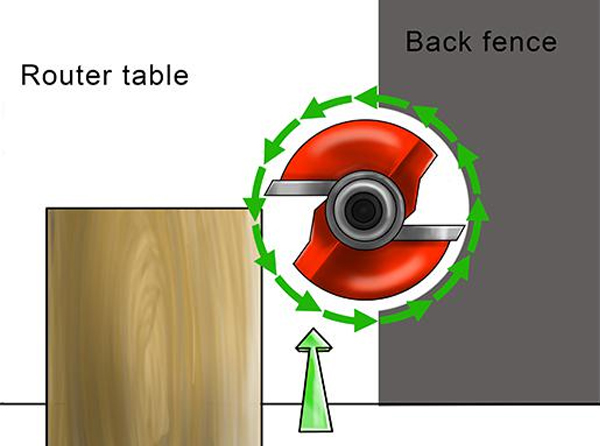 |
A stationary router (such as a router mounted in a bench top or router table such as the CraftPro or Professional table) also spins the router bit at high speeds. However, the router bit is positioned upside down in the table, and so it spins in an anti-clockwise direction. The material is then moved against the router bit as it spins so that the cutting edges can make contact with and shape the workpiece. As the router bit spins, the cutting edges slice through the material, shaping it with the rout bit profiles. The material that is removed gathers in the gullet and is expelled with each turn of the router bit. |
|||
A brief history of Trend router cutters |
||||
In the beginning |
||||
 |
The wood router of today and its router bits, or cutters, has a strange origin as it evolved from a primitive tool called an “Ò tooth”. This name was derived from the limitation of dentistry at the time when a single projecting tooth was a common sight. The tooth took the form of a ground tapered steel chisel, wedged into a wooden stock, and was used for cutting flat-bottomed and radius grooves. Skilled hands could produce clean-cut grooves with a series of gouging movements. A metal version, with built-in adjustments, was made some years later, but craftsmen still use versions of this early model today. |
|||
1870's |
||||
 |
In the 1870’s however, someone thought that by making the blade rotate simultaneously with the forward motion, something useful would happen. Before the electric motor entered the equation, router bits or cutters were rotated by means of a foot pedal. The Barnes Former sharper, for instance, ran at 2,500 RPM, with the operator really having to exert themselves to achieve a reasonable degree of cutting ability - a lot more effort than using the carpentry routers we have now. |
|||
 |
This type of routing machine, first produced in the USA in 1872, was reported still to have been in use in the 1930's. This was the forerunner of the spindle moulder and later the woodworking router of the post-war period.
During this time, cutting geometry was in its infancy and cutting edges blunted quickly, especially when used on abrasive timbers. |
|||
1920's and onwards |
||||
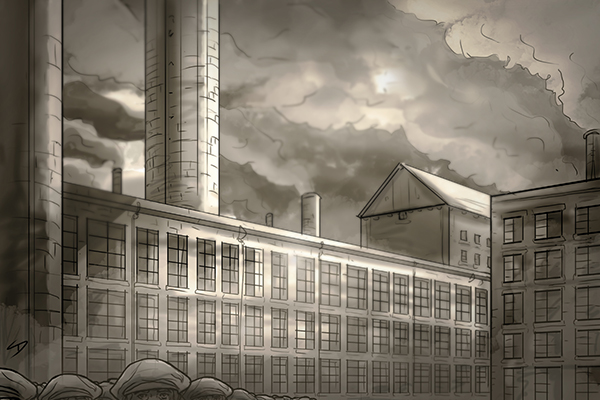 |
In the UK, it was William Day from North London Saw Works who produced the first high-quality tooling in 1926.
In 1938, a carbide tip brazed onto a high-speed steel cutter was released with astounding results; the tungsten carbide tipped cutter had arrived. |
|||
Twin blades |
||||
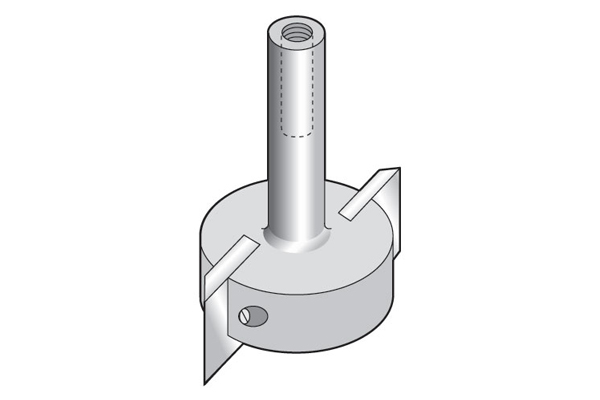 |
Cutters with two blades were used in the 1930’s, mainly in conjunction with belt-driven stationery routers at speeds from 6,000 to 8,000 RPM.
Blades were first cast, then produced in high-speed steel and finally in solid tungsten and known as Widia and Wimet steel. The original steel blades were ground by hand to the required profile, but the range of styles was very limited. |
|||
Single blades |
||||
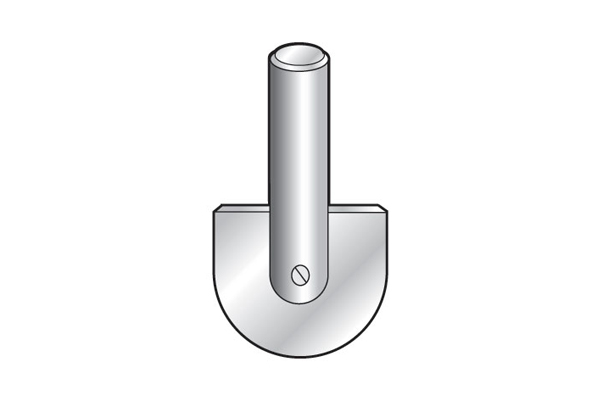 |
Single bladed cutters were used from the late 1920's right up to the 1950's, especially by pattern makers.
These were produced in numerous styles, and the advent of cutters with bottom cut geometry was traced to this early design. These tools could be run at greater speeds: smallest diameters at 18,000 RPM and largest at 12,000 RPM. |
|||
1990's and beyond |
||||
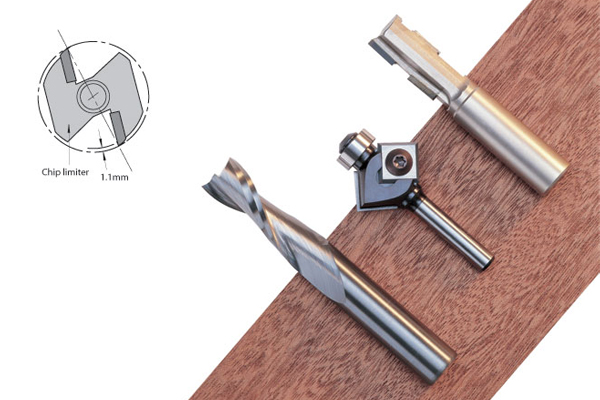 |
Innovative tooling continues to be developed. Examples of this include solid carbide spiral cutters, replaceable tip cutters, and polycrystalline diamond (PCD) tipped tooling.
For improved safety, chip limitation of 1.1mm is now included in designs of cutters with diameters over 16mm (⅝"). Chip limiters restrict the amount of material removed with each rotation, they decrease the chance of kickback and reduce the level of injury should you accidentally make contact with the cutter. |
|||
 |
||||







